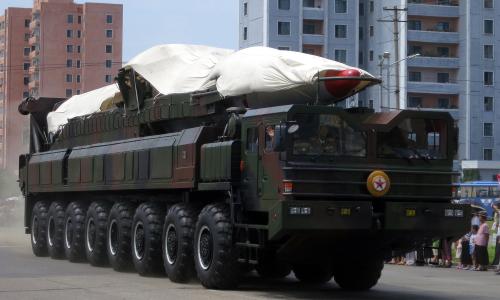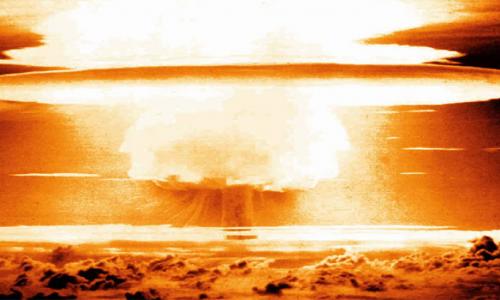In this working paper we examine the first four intercept tests of the ground-based midcourse national missile defense system being developed by the United States, as well as plans for the fifth test. We pay particular attention to the controversial role that the C-band beacon on the warhead played in the recent tests.
The most basic of all the functions that the missile defense system must perform is "hit-to-kill" -- the kill vehicle must be able to maneuver to intercept the mock warhead at high closing speeds. But while the past intercept tests have demonstrated hit-to-kill, they have not done so under conditions that are operationally realistic.
We find that the current test program is still in its infancy, and that the United States remains years away from having enough information to make an informed decision on the deployment of even a limited nationwide missile defense system.
Following the previous intercept test in July 2001, which was successful, some missile defense supporters argued that this test demonstrated that the technology was ready to be deployed. It is therefore important to put the current test program in the proper context by describing its limitations and artificialities. While these limitations may be appropriate for a program at this early stage of development, they mean that the tests say little about the ability of the system to operate under realistic conditions.
All four of the previous intercept tests have been essentially repeats of one another, but with additional components included in the later tests. In each case, the trajectories of the target missile and of the interceptor missile were the same, the target complex deployed was the same, the intercept point was the same, and the test took place at the same time of day. The upcoming test will be a repeat of the previous one.
One of the key tasks that a defense system will have to perform is to distinguish the warhead from decoys and other objects. The tests have included a balloon decoy as well as a mock warhead, and the system has been credited with successfully discriminating the warhead. However, the physical appearances of the objects used in the tests have been very different from one another as measured by the various defense sensors. Moreover, in all cases, the defense has been given a priori information about the expected appearance of the different objects in advance of the test, an advantage the United States is unlikely to have in a real attack. Thus, the intercept tests reveal very little about the discrimination capabilities of the system.
As a result, it is clear that the tests to date and the upcoming test are mainly focused on the "endgame" of the full intercept process-on whether the kill vehicle can successfully home on a target that it can readily identify (or has been identified for it).
But an examination of the tests shows that even this goal has not been met. Hit-to-kill has been demonstrated, but not under conditions that are operationally relevant.
One of the most relevant parameters for exo-atmospheric hit-to-kill is the closing speed between the kill vehicle and the target. Despite this, the intercepts have all occurred at closing speeds that are much lower -- by up to a factor of two-than would be expected for an operational system. This artificiality is compounded by a second one: based on data sent by the C-band beacon or GPS receiver on the mock warhead, the kill vehicles have been launched on a trajectory that is headed essentially straight at the mock warhead. As a result, the kill vehicle does not have to maneuver much to home on the mock warhead and intercept it. In a real attack, the kill vehicle might need to maneuver far more to home on the target, especially if the defense radars had not succeeded in discriminating the warhead from the other objects.
The primary reason for the artificially low closing speeds is that all these tests have used a two-stage surrogate booster in place of the planned three-stage booster for the interceptor. The development of the booster has fallen behind schedule, and is not expected to be ready for use in the intercept tests until at least a year from now. However, it is not clear why BMDO has chosen to use a two-stage surrogate booster rather than a faster three-stage booster. A three-stage booster is used to launch the mock warhead in the tests.
In addition to using a three-stage booster to launch the kill vehicle, the Bush administration should take several other steps to make the test program more realistic and its results more meaningful. These include testing against more realistic decoys and other countermeasures, conducting tests in which the defense does not have full a priori knowledge about the test conditions, and testing under a much wider range of conditions. All of these measures can be implemented within the Anti-Ballistic Missile (ABM) Treaty, which permits the ground-based midcourse system to be fully tested.
The report concludes by considering the planned test program, in which 20 more intercept tests are scheduled by the end of 2006, for a total of 24 development tests. Even if this ambitious schedule can be met, operational testing would not begin until 2007. Because initial operational testing would need to be concluded prior to making a well-informed deployment decision, the United States will not be in a position to make a deployment decision about the ground-based midcourse system until 2008 at the earliest.



